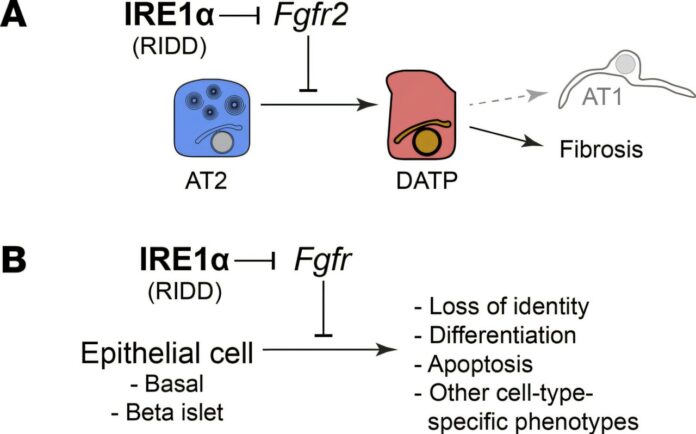Regenerating tissues following injury is a demanding task most multicellular organisms master to different levels. In order to better understand the mechanisms common to many species behind tissue regeneration, researchers from the Paul Langerhans Institute Dresden and the BIOTEC (TU Dresden), decided to examine changes in systemic metabolism during regeneration. Their findings, published in npj Regenerative Medicine, reveal similarities and differences in metabolic signaling, lipid mobilization and storage between two regenerating species.
In this project, the research teams of Tatiana Sandoval-Guzmán (PLID) and Marko Brankatschk (BIOTEC TU Dresden) joined forces to investigate how systemic metabolism adapts to support tissue regeneration in both axolotls (Ambystoma mexicanum) and fruit flies (Drosophila melanogaster). In regenerating tissues, cells need resources to grow, proliferate and differentiate. Such building blocks and required signaling, can be met by local metabolic flexibility or systemic provision.
This study aimed to identify the contribution of systemic metabolic adaptations required to foster regeneration. To do so, the study examined fruit flies continuously repairing intestinal damage and axolotls that were regrowing their limbs.
“In axolotls, limb regeneration involves distinct, sex-specific lipid adjustments. Males increase the amount of circulating lipids, while females predominantly store lipids in the liver, facilitating efficient resource mobilization for both sexes during regeneration,” describes Sandoval-Guzmán, PLID research group leader and one of the senior authors of the study.
The liver, much like the fat body cells in fruit flies, is key to this lipid storage and supply. Insulin-like growth factors (IGFs) released by regenerating limbs and hepatic insulin signaling pathways are key to help adapting lipid metabolism to meet the needs of cell proliferation.
“Interestingly, injured Drosophila increase insulin production and genetic disruption of insulin signaling in Drosophila fat body cells impairs the sterol homeostasis in regenerating tissues which leads to decreased cellular proliferation,” explains Brankatschk, research group leader at BIOTEC of TU Dresden.
“Thus, these observations indicate that insulin signaling is indeed one essential element required to enable cross-organ communication between the liver and damaged tissues—likely in both axolotl and fruit flies.”
If true, the data could point to a functionally conserved mechanism possibly essential in other animals.
Thus, these findings could have broader applications in regenerative medicine, where managing insulin signaling and lipid metabolism may improve tissue repair and healing.
More information:
Ines C. Kübler et al, Systemic and local lipid adaptations underlie regeneration in Drosophila melanogaster and Ambystoma mexicanum, npj Regenerative Medicine (2024). DOI: 10.1038/s41536-024-00375-x
Provided by
Deutsches Zentrum fuer Diabetesforschung DZD
Citation:
Lipid lifelines: The metabolic shifts behind regeneration (2024, November 27)
retrieved 29 November 2024
from https://medicalxpress.com/news/2024-11-lipid-lifelines-metabolic-shifts-regeneration.html
This document is subject to copyright. Apart from any fair dealing for the purpose of private study or research, no
part may be reproduced without the written permission. The content is provided for information purposes only.


